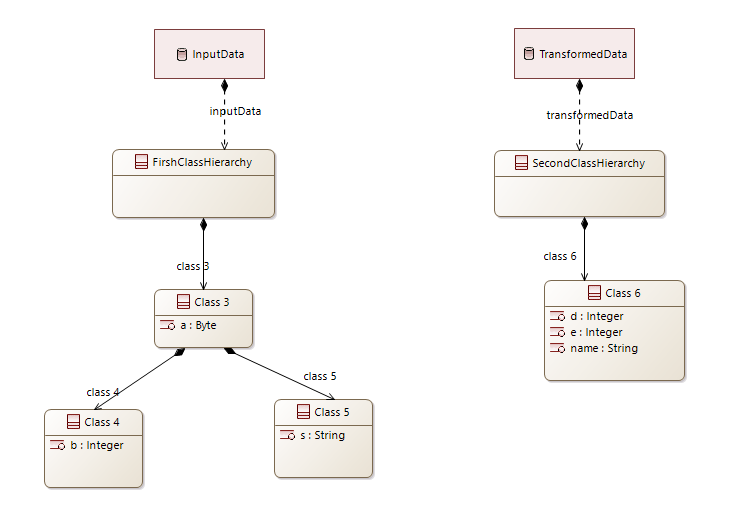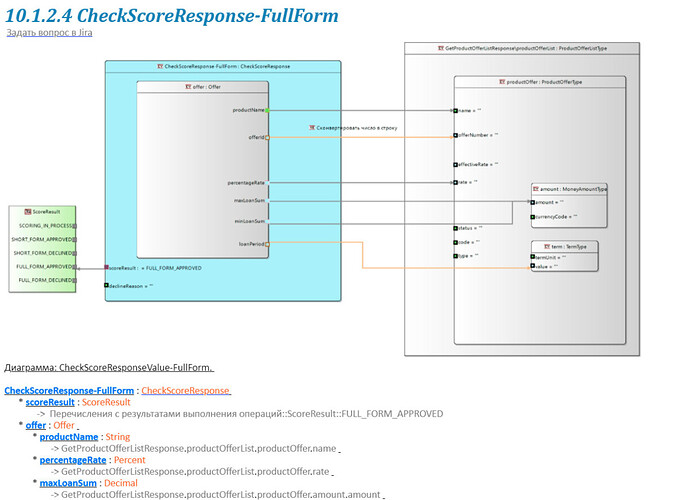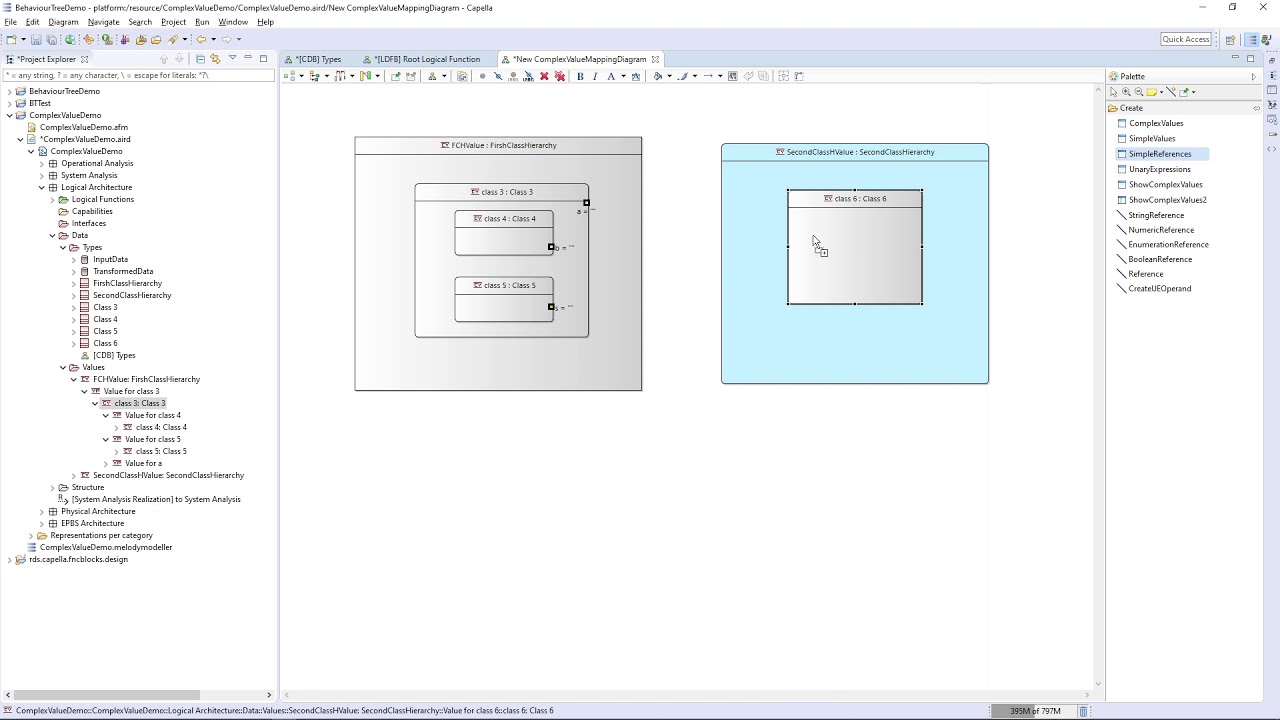In my previous project Complex Value viewpoint was created.
Complex Value viewpoint helps to define mappings between different data hierarchies in a visual way.
Capella has a meta model to work with values (similar to slots in UML). But Capella does not have a lot of UI functions to work with Complex Values models.
ComplexValue viewpoint adds several diagrams and tables that helps to create, analyze and define mapping between ComplexValue hierarchies in a visual way.
Let’s look at an example
Some function TransformData receives InputData with type FirstClassHierarchy
and outputs outputData with type SecondClassHierarchy.
This function simply transform data from input format to some other format.
In real project we have imported big data hierarchies into Capella from xsd (via ecore), defined transformations rules between data and publish documents with this specifications.
We need to specify behaviour of this function by defining transformationo rules between input and output data formats.
ComplexValue meta model can be used for this purpose.
ComplexValue viewpoint adds mapping diagram that helps to create hierarchy of complex values based on hierarchy of classes and define mapping between values.
Several complex value mapping diagram can be used on different levels of Complex Value to define full mapping between data hierarcies.
Full result mapping can be viewed\analyzed using data table
MSWord and html documentation can be generated based on transformation model.
Below is a brief demonstration of ComplexValue viewpoint usage .
I’ve created this topic as a first step to share this viewpoint code\updatesite if someone will be interested.





